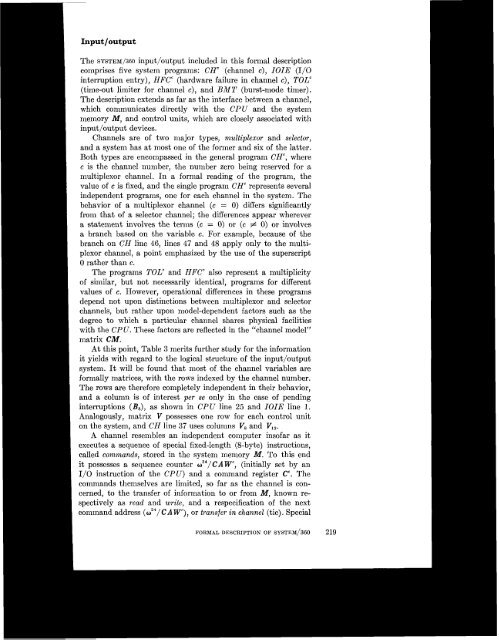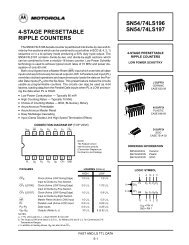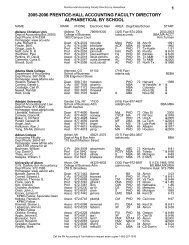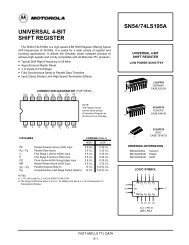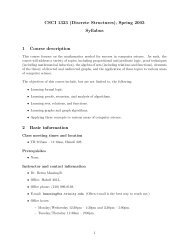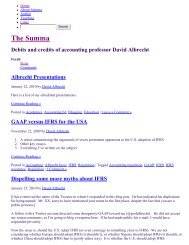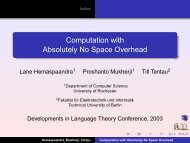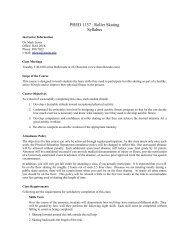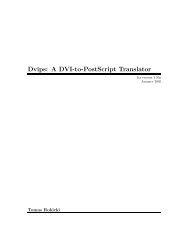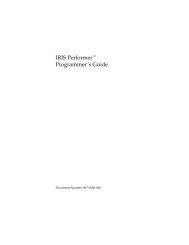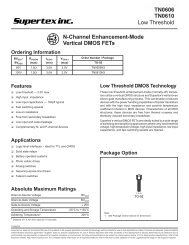A formal description of SYSTEM/360
A formal description of SYSTEM/360
A formal description of SYSTEM/360
- No tags were found...
Create successful ePaper yourself
Turn your PDF publications into a flip-book with our unique Google optimized e-Paper software.
Input/outputThe <strong>SYSTEM</strong>/B~O input/output included in this <strong>formal</strong> <strong>description</strong>comprises five system programs: CH" (channel c), IOIE (I/Ointerruption entry), HFC" (hardware failure in channel c), TOL"(time-out limiter for channel c), and BMT (burst-mode timer).The <strong>description</strong> extends as far as the interface between a channel,which communicates directly with the CPU and the systemmemory M, and control units, which are closely associated withinput/output devices.Channels are <strong>of</strong> two major types, multiplexor and selector,and a system has at most one <strong>of</strong> the former and six <strong>of</strong> the latter.Both types are encompassed in the general program CH, wherec is the channel number, the number zero being reserved for amultiplexor channel. In a <strong>formal</strong> reading <strong>of</strong> the program, thevalue <strong>of</strong> c is fixed, and the single program CH represents severalindependent programs, one for each channel in the system. Thebehavior <strong>of</strong> a multiplexor channel (c = 0) differs significantlyfrom that <strong>of</strong> a selector channel; the differences appear wherevera statement involves the terms (c = 0) or (c # 0) or involvesa branch based on the variable c. For example, because <strong>of</strong> thebranch on CH line 46, lines 47 and 48 apply only to the multiplexorchannel, a point emphasized by the use <strong>of</strong> the superscript0 rather than c.The programs TOL" and HFC" also represent a multiplicity<strong>of</strong> similar, but not necessarily identical, programs for differentvalues <strong>of</strong> c. However, operational differences in these programsdepend not upon distinctions between multiplexor and selectorchannels, but rather upon model-dependent factors such as thedegree to which a particular channel shares physical facilitieswith the CPU. These factors are reflected in the "channel model"matrix CM.At this point, Table 3 merits further study for the informationit yields with regard to the logical structure <strong>of</strong> the input/outputsystem. It will be found that most <strong>of</strong> the channel variables are<strong>formal</strong>ly matrices, with the rows indexed by the channel number.The rows are therefore completely independent in their behavior,and a column is <strong>of</strong> interest per se only in the case <strong>of</strong> pendinginterruptions ( B8), as shown in CPU line 25 and IOIE line 1.Analogously, matrix V possesses one row for each control uniton the system, and CH line 37 uses columns V8 and V12.A channel resembles an independent computer ins<strong>of</strong>ar as itexecutes a sequence <strong>of</strong> special fixed-length (8-byte) instructions,called commands, stored in the system memory M. To this endit possesses a sequence counter aZ4/CAW1 (initially set by an1/0 instruction <strong>of</strong> the CPU) and a command register C". Thecommands themselves are limited, so far as the channel is concerned,to the transfer <strong>of</strong> information to or from M, known respectivelyas read and write, and a respecification <strong>of</strong> the next


